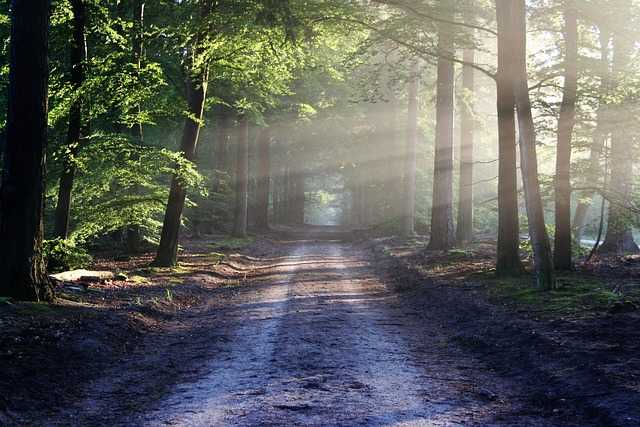Table of Contents
- Exploring the Timeless Appeal of Landscape Paintings
- Techniques That Breathe Life Into Your Landscape Artwork
- Understanding the Influence of Nature on Landscape Styles
- Curating a Landscape Painting Collection for Every Space
- Q&A
- Future Outlook
Exploring the Timeless Appeal of Landscape Paintings
Landscape paintings have captivated generations, serving as windows into nature’s beauty and the world beyond our immediate surroundings. Artists often venture beyond mere replication of the scene, infusing their work with personal emotions and vivid interpretations. Whether it’s sweeping vistas, tranquil shores, or rugged mountain ranges, these artworks evoke a sense of tranquility that resonates with viewers. The enchanting colors and dramatic lighting in a landscape piece can transport one to distant lands or remind them of cherished memories.
Artistic Techniques: Many landscape artists employ various techniques to breathe life into their creations, including:
- Layering: This technique adds depth, allowing distant hills or clouds to recede into the background.
- Color Theory: Understanding how colors relate can evoke specific emotions, enhancing the visual experience.
- Perspective: Manipulating perspective draws viewers into the scene, creating an immersive experience.
The historical context of landscape paintings also plays a vital role in their allure. During the Romantic period, for example, nature was embraced as a reflection of the human experience, mirroring emotions and ideals. Artists like J.M.W. Turner and Caspar David Friedrich explored the relationship between nature and man, crafting works that resonate with both beauty and philosophical depth. As art movements evolved, so did the portrayal of landscapes, from the detailed realism of the Barbizon School to the vivid expressiveness of Impressionism, showcasing how the portrayal of nature adapts with time.
Today, landscape paintings remain relevant, fusing classical techniques with contemporary expressions. With the rise of digital art, artists have expanded their tools to explore new dimensions of landscape representation. Many modern landscape works delve into themes of environmental consciousness, reflecting concerns about climate change and the natural world’s fragility. These pieces not only highlight the aesthetic beauty of landscapes but also serve as important reminders of preservation, inviting viewers to appreciate and protect the earth’s remarkable diversity.


Techniques That Breathe Life Into Your Landscape Artwork
Transforming your landscape artwork from a simple depiction of nature into a captivating display involves various techniques that can inject vitality and depth into your creations. One effective method is to master the use of color theory. By understanding how different colors interact, you can create a sense of harmony or drama in your painting. For example, opting for a monochromatic color scheme can evoke serenity, while contrasting colors can energize the scene. Don’t hesitate to experiment with colors that evoke emotions, as this will make your artwork more engaging.
Another technique to consider is the play of light and shadow. The way you depict light can dramatically change the viewer’s perception of your landscape. To capture an authentic ambiance, observe how light interacts with different elements in your scene. You can utilize techniques such as chiaroscuro, which involves the treatment of light and shadow to give your artwork a three-dimensional effect. This can be achieved by layering a base wash with darker shades on top to articulate shadows, making your landscapes come alive.
Incorporating texture can also add an exciting dimension to your artwork. Experimenting with various tools and mediums can create diverse textures that mimic natural elements—like rough bark on trees or the smoothness of water. Techniques such as palette knife painting, dry brushing, or even layering can enhance the tactile quality of your landscape. This not only adds visual interest but also invites viewers to feel the landscape almost as if they are stepping into it. Consider these techniques:
- Palette Knife: Use it for creating sharp textures, especially in rocky areas.
- Sponging: Useful for adding organic textures like foliage or clouds.
- Stippling: Employ this for grass and shrubbery to enhance realism.
composition plays a crucial role in bringing balance and focus to your landscape painting. Utilizing the rule of thirds can guide you in placing focal points in a way that naturally attracts the viewer’s eye. Don’t shy away from varying the perspective—painting from a high vantage point can offer a sweeping panoramic view, while a low angle can create drama and intimacy. By thoughtfully arranging these elements, you can create art that not only captures nature but also evokes a narrative.


Understanding the Influence of Nature on Landscape Styles
The interaction between nature and landscape paintings is a dance of observation and inspiration that has shaped various artistic styles throughout history. Artists often find themselves drawn to the raw beauty of the natural world, where elements such as light, color, and texture converge to create compelling scenes. The spontaneity of outdoor settings encourages a sense of experimentation, which has led to diverse interpretations of landscapes across different cultures and eras.
Key elements influenced by nature include:
- Color Palette: Nature offers a vivid range of colors, from the greens of lush forests to the blues of expansive skies. Each artist captures these hues differently, resulting in styles ranging from realistic depictions to more abstract interpretations.
- Composition: The arrangement of natural elements plays a crucial role in landscape art. Artists utilize the layout found in nature—whether it’s a sprawling mountain range or the intricate details of a forest floor—to construct visually engaging compositions.
- Atmospheric Effects: The transient effects of light and weather can dramatically alter a landscape. Impressionist artists, for instance, were pioneers in capturing these fleeting moments, portraying how sunlight dances on water or fog envelops a valley.
When analyzing different styles of landscape paintings, the influence of nature is evident in both technique and thematic focus. Romanticism, for example, idealized the natural world, elevating its beauty and power as a source of inspiration and spiritual connection. This was in stark contrast to the more restrained and orderly approach found in Classical landscape painting, where nature was often depicted as a backdrop to human activities, emphasizing harmony between civilization and the environment.
In contemporary times, artists continue to explore the dichotomy between nature and urbanization, reflecting societal changes and environmental concerns. New mediums, including digital painting, allow for even greater experimentation, enabling artists to blend natural elements with surreal or futuristic concepts. This ongoing evolution suggests that nature remains a foundational influence in landscape art, encouraging artists to push boundaries while remaining rooted in the world around them.


Curating a Landscape Painting Collection for Every Space
When assembling a collection of landscape paintings, it’s essential to consider the unique aura of each space you intend to embellish. The choice of art can profoundly influence the ambiance and functionality of a room. For living rooms, consider bold, expansive canvases that invite conversation and evoke emotions. These larger pieces can serve as the focal point, drawing guests into a serene world of nature, whether it’s the sweeping plains or tranquil lakes.
In more intimate spaces like bedrooms or reading nooks, smaller, delicate works tend to resonate more deeply. Think about paintings that depict quiet landscapes at dusk or dawn, capturing the calmness of early morning light. These pieces should complement the room’s color palette and assist in creating a peaceful atmosphere conducive to relaxation. Additionally, grouping small landscapes together can enhance visual interest and create a cohesive narrative within the space.
Dynamic environments, such as offices or studios, benefit from a different approach. Here, vibrant and energetic landscapes depicting mountains or lively coastlines can inspire creativity and motivation. These types of artworks can instill a sense of adventure and ambition, making them perfect companions for a workspace. It’s also worth exploring how different orientations or frames can impact the overall dynamic of your collection, allowing for versatility and personal expression.
Consider incorporating a mix of different styles—abstract, impressionistic, and realistic landscapes—to create depth and variety throughout your collection. When curating, pay attention to the scale and proportion of each piece in relation to its surroundings. An effective way to visualize this is by using a simple table to guide your choices:
| Space | Style | Size | Suggested Colors |
|---|---|---|---|
| Living Room | Bold Realism | Large | Earth tones, Blues |
| Bedroom | Soft Impressionism | Small | Pinks, Pastels |
| Office | Vibrant Abstract | Medium | Bright Accents, Neutrals |
| Hallway | Eclectic Mix | Varied | Diverse Palette |
By thoughtfully selecting pieces that reflect the function and character of each space, you’ll create a harmonious landscape painting collection that transforms your environment into a gallery of natural beauty. Each chosen work should resonate with your personal style while inviting viewers to get lost in the serene and evocative imagery of the great outdoors.
